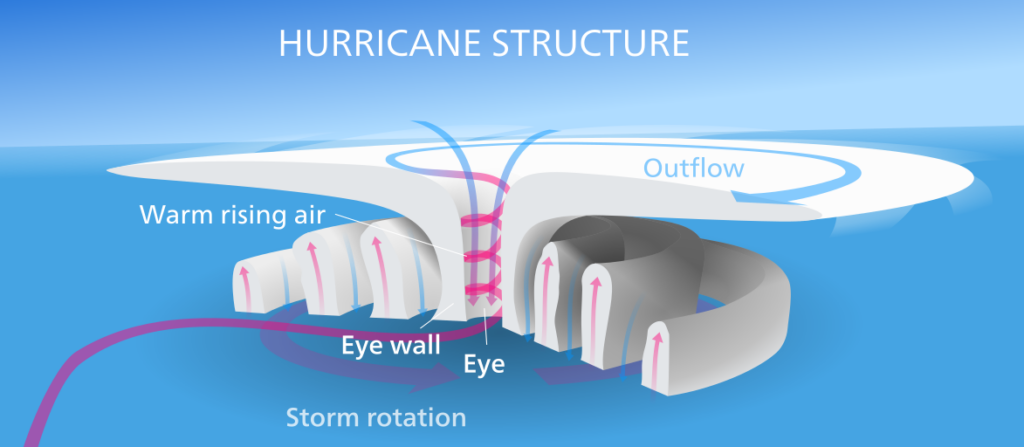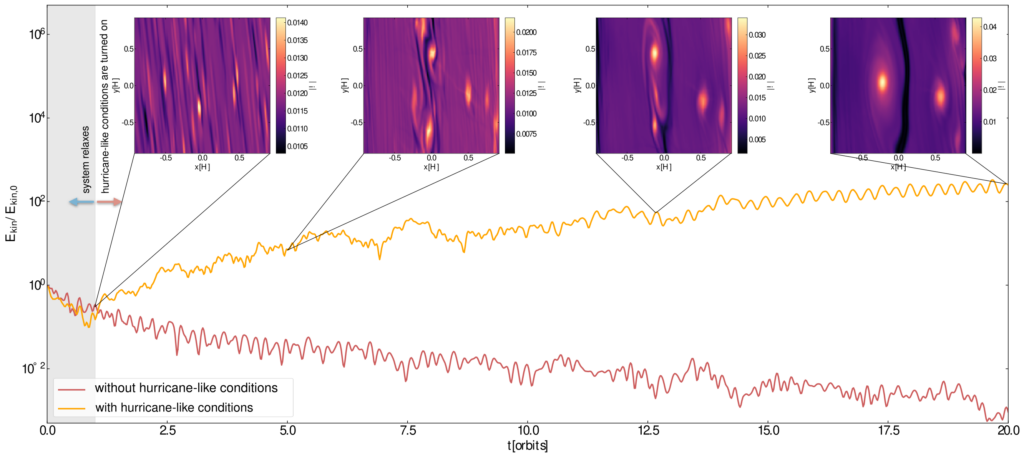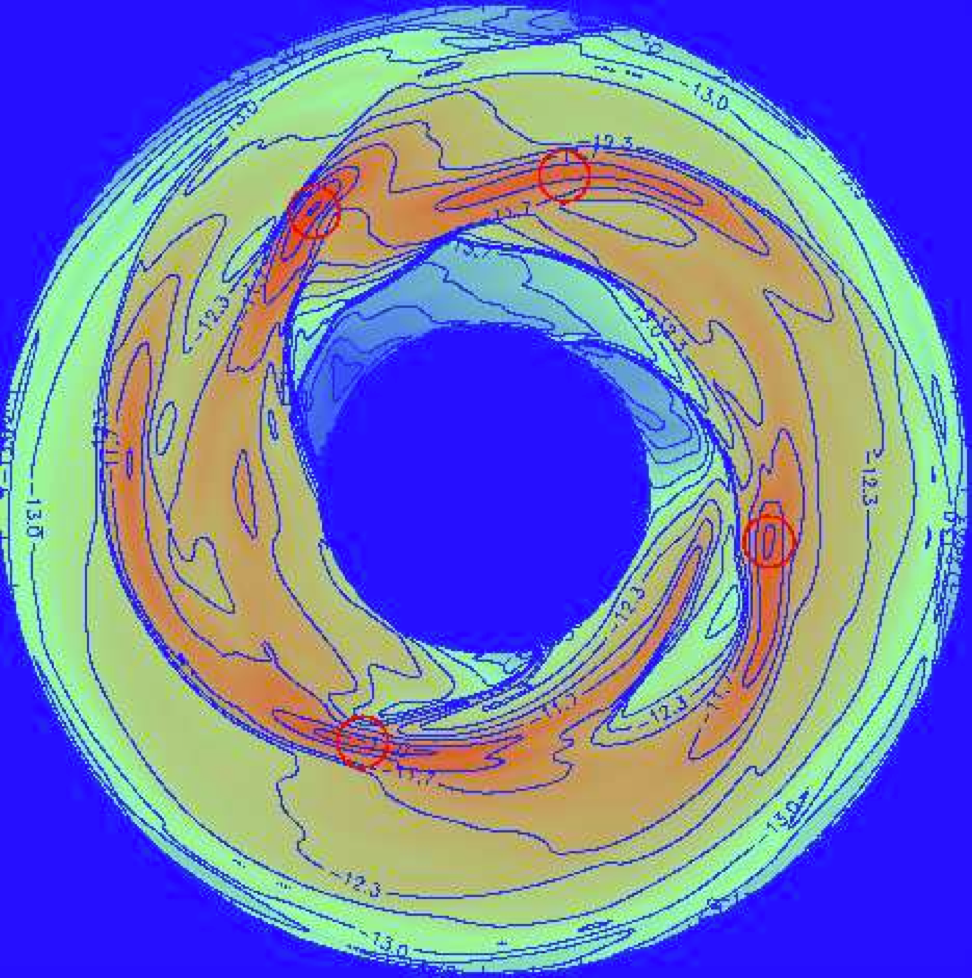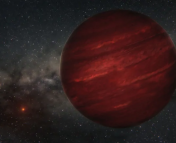Title: The Prospects for Hurricane-like Vortices in Protoplanetary Disks
Authors: Konstantin Gerbig, Gregory Laughlin
First Author’s Institution: Department of Astronomy, Yale University, New Haven, USA
Status: Accepted to ApJ
What do hurricanes have to do with planet formation? On first glance: nothing. Planets form in protoplanetary disks, whereas hurricanes occur on a planet that has already formed: Earth. However, the authors of today’s paper are searching for a connection between the two.
How Planets Form
Planets form in protoplanetary disks that are made of dust and gas. When dust in those disks clumps together, it can form pebble-sized nuggets that stick together to form boulders. The boulders can become kilometer-sized protoplanets until they finally grow to planets. However, there still are some missing pieces in our understanding of planet formation. One of these is the meter size barrier, which states that it’s really hard to get from a meter-sized boulder to something larger. It is fairly well established how to get from dust to meter-sized boulders; and how to get from kilometer-sized protoplanets to planets. It’s the step in between that is missing. However, the meter size barrier can not be a real physical barrier: We are living on the proof that planet formation must be possible. But how?
One mechanism proposed to facilitate the growth of boulders is a dust trap where dust and pebbles can be trapped together allowing them to effectively grow to protoplanets. The authors of today’s paper investigate a possible way such a dust trap could occur: a hurricane!
Hurricanes on Earth
For hurricanes on Earth, the key ingredient is water: a hurricane can only form above an ocean. As in planet formation, big things start small: the seed to a hurricane needs to be a small initial turbulence or spin flow of air.
The little seed is magnified by an interplay of strong winds and the evaporation and condensation of water. Strong winds on the surface of the ocean pick up water vapor. At some point, the air becomes saturated so that the water has to condensate again. This is when clouds start to form. The condensation releases heat into the air (called “latent heat”) and the heated air starts to rise up. At a certain level in the atmosphere, the air is able to cool down by radiating away its energy, so that it does not rise further. The air can flow away horizontally at that height. It leaves behind a void at the surface of the ocean that gives rise to more winds. With the right conditions, this mechanism intensifies the little initial turbulence thus the spin flow becomes a large circulation of air mass: a hurricane.

As depicted in Figure 1, a hurricane has a center called the eye of a hurricane. Within the eye, moisturized air continues to flow upward, maintaining the storm as long it can pick up water vapor and rise upwards.
What About Hurricanes in Protoplanetary Disks?
The authors of today’s paper propose that a similar mechanism as hurricanes can occur in protoplanetary disks. A layer of dust grains that are covered with ice can act as a fuel tank for hurricane-like structures similar to the ocean on Earth. When a gas layer flows over the icy dust grains, it can pick up moisture. Just like on Earth, if there is an initial turbulence in the form of a spin flow, it can be magnified by the same mechanism as a hurricane.
Previous research has shown that such spin flows already exist in protoplanetary disks. They are called vortices. The main difference to a hurricane on Earth is that both gas and dust grains in a protoplanetary disk orbit the star. This motion around the star, also known as Keplerian motion, gives rise to shear forces that tear apart vortices. This means that there is something acting against the growth of vortices.
In today’s paper, the authors construct a model to simulate hurricane-like conditions in protoplanetary disks. They seed their simulations with small initial vortices and observe whether they grow.

The simulations show that the hurricane mechanism indeed can create large vortices out of small ones. Figure 2 presents the comparison between two simulations: one without the (red line) and one with the hurricane model (yellow line). The small initial vortices become larger over time and merge to a big one, which may produce a dust trap.
The authors find a sweet spot for sustaining and magnifying vortices. This sweet spot is located just outside the ice line, which is the location in the disk where the temperature is low enough for water to freeze.
Can Hurricanes Help to Form Planets?
We’ve seen that these hurricane-like vortices are possible, but can they actually form planets?
Prior research has shown that a vortex can trap dust within its eye. As vortices are found to be short-lived, mechanisms prolonging the lifetime of a vortex, such as the hurricane mechanism, are essential in the question of planet formation.
However, when planets form in a vortex, they draw from the dust grains that fuel the hurricane-like vortex. If a planet eats up too much of the dust, the vortex can no longer be kept alive. The authors of today’s paper therefore argue that it is not obvious if this mechanism actually supports planet formation. For now, the question must remain unanswered. However, the first step is done: we know that hurricanes can occur in protoplanetary disks. Now it is up to future investigation to see if they can enhance planet formation.
Disclaimer: The first author of today’s paper is an active Astrobites author but was not involved in the publication of today’s bite.
Astrobite edited by Macy Huston
Featured image credit: NASA/JPL-Caltech, Lina Kimmig with help from https://easydrawingguides.com/how-to-draw-a-hurricane/




